Tasty and sweet variety of corn "Bonduelle": ideal for canning and fresh consumption
Sweet corn - a popular culture among summer residents. It does not require care and at the same time gives a good harvest. In the world of cultivated plants there is no analogue to the magnificent taste of golden grains. No one will refuse to buy sweet corn in the summer, and canned corn in the winter for making delicious salads. In this article we will look at Bonduelle corn - what kind of variety it is, what its features and advantages are.
Description of the variety
The first thing gardeners and gardeners need to know: Bonduelle is not a variety of corn. This is a trade name, a brand that is used in the seed market to increase the sale of seeds. Bonduelle canned food is made from several varieties of sweet corn. The main ones are Bonus and Spirit.
These are high-yielding annual hybrid plants. The Spirit and Bonus varieties ripen in 90-100 days. Plants reach up to 2 m in height. The length of the cob is approximately 20-22 cm. The varieties are resistant to fungal diseases and actively develop in fertile soil.
The main advantage of the varieties is large sugar grains, which are ideal as in conservation, and in other types of applications. After heat treatment and pickling, most of the beneficial properties of corn are retained, which gives Bonduelle high popularity among buyers.
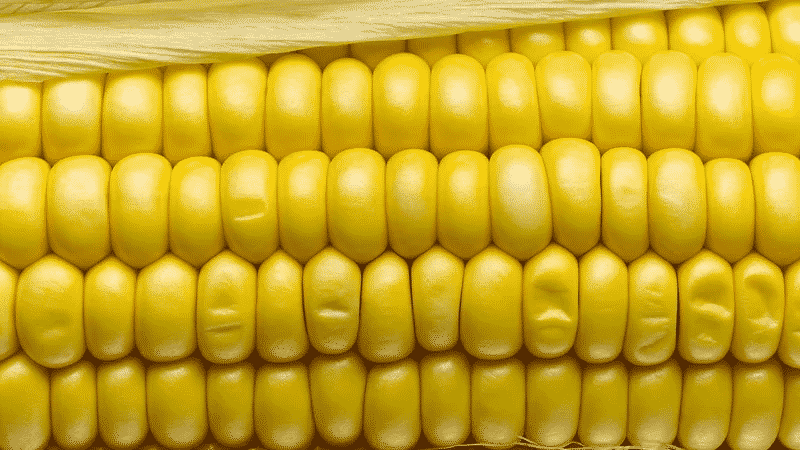
Distinctive features
How to distinguish sweet corn from other varieties? In addition to excellent taste properties, sugar varieties have the following differences:
- cob length – 20-22 cm;
- the grain size of the sugar type is 2 cm, in contrast to ordinary varieties, in which it is no more than 1 cm;
- sugar varieties are juicier than alternative varieties.
On a note. An even number of flowers is always formed on an ear of corn, and then, accordingly, the same number of seeds.
Productivity
In the summer, sweet corn has become one of the favorite products, which is equally enjoyed by both adults and children. It has high nutritional value and contains a number of useful substances. Regular (but moderate) consumption of corn not only provides a pleasant taste sensation, but also has health benefits.
If the rules of agricultural technology are followed, from 50 to 70 centners of sweet corn are harvested from 1 hectare. While medium-yielding varieties bring only up to 50 centners.
For your information. When exposed to sunlight, the percentage of sugar in grains decreases, which is quickly restored at night.
Composition, properties and KBJU
After heat treatment, 100 g of product contains 125 calories, which account for:
- 67.6 g carbohydrates;
- 11.2 g protein;
- 5.3 g fat;
- 2.2 g fiber.
100 g of canned sweet corn contains 93 kcal, which accounts for:
- 8.6 g carbohydrates;
- 3.3 g protein;
- 2.2 g fat.
The average weight of one cob of corn is about 330 g.
For your information. More than 1,000 varieties of corn have been developed, differing, among other qualities, in the coloring of the grains. The color varies from light beige to dark brown and even black.
Growing order
Corn has long been one of the most common garden crops. Its grains are boiled and canned for consumption in winter.In addition, tall plants decorate a summer cottage and create a kind of hedge, protecting shorter crops that need a minimum of light from the sultry rays of the sun.
Corn is successfully grown not only in warm regions. The plant is unpretentious, and creating favorable conditions for it is not difficult.
Features of planting and care
Well-lit areas are chosen for growing sweet corn. To get a good harvest with high-quality cobs, the soil must be fertilized.
For proper planting, you must adhere to the following rules:
- when sowing seeds, the soil temperature should not be below +10 degrees;
- the seed is embedded in the soil to a depth of 6-8 cm;
- when 3-4 leaves appear, the bushes are thinned out, leaving a distance between them of up to 0.5 m;
- To prevent plants from falling, they are hilled up.
On a note. To obtain an earlier harvest, the crop is grown through seedlings, with the seeds sown in March or April.
When the sixth leaf appears on the bushes, fertilizing is done. During this period, humus, compost, mullein or chicken droppings are added. In addition to organic matter, liquid superphosphate, potassium fertilizers or ammonium nitrate are added to the row spacing.
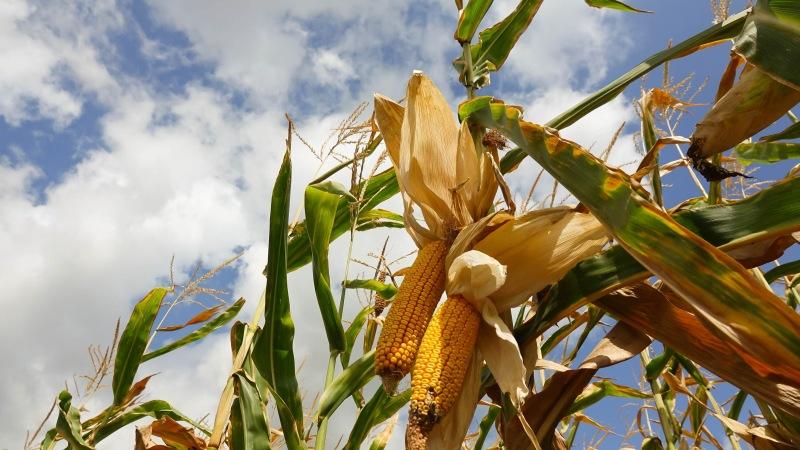
Micronutrient deficiencies are determined by the appearance of corn:
- short stature and pallor of the leaves indicate a lack of nitrogen;
- if at an early stage of development the crop is stunted in growth, and the edges of the leaves acquire a purple tint, this means that the plant lacks phosphorus;
- excessive waviness of the leaves and a change in color from pale to dark brown indicates a lack of potassium.
After planting, the corn grows slowly at first, so loosening and weeding are carried out (about three times during the entire growing season) to enrich the soil with oxygen and remove the top crust. With the appearance of the eighth leaf, corn grows more intensively: at this time, the growth per day is 5-6 cm - this is 2-3 times faster than at the initial stage.
If the corn has side shoots, they should be cut off.so that they do not interfere with the growth of bushes. The formation of unwanted side shoots is promoted by low temperatures in the early stages of the growing season and excessive amounts of fertilizer applied.
Water corn during the period of laying and ripening of young cobs not often, but abundantly, so that the water penetrates 15 cm in depth.
Harvesting and application
The corn harvest must be harvested on time. The grains of unripe cobs do not differ in juiciness and taste. Overripe fruits become dry and hard, the sugar in the grains quickly decreases, and the percentage of starch, on the contrary, increases.
Sweet corn is harvested when the cobs reach milky or milky-waxy maturity., which occurs 20-25 days after the start of flowering. During this period it contains the most sugar.
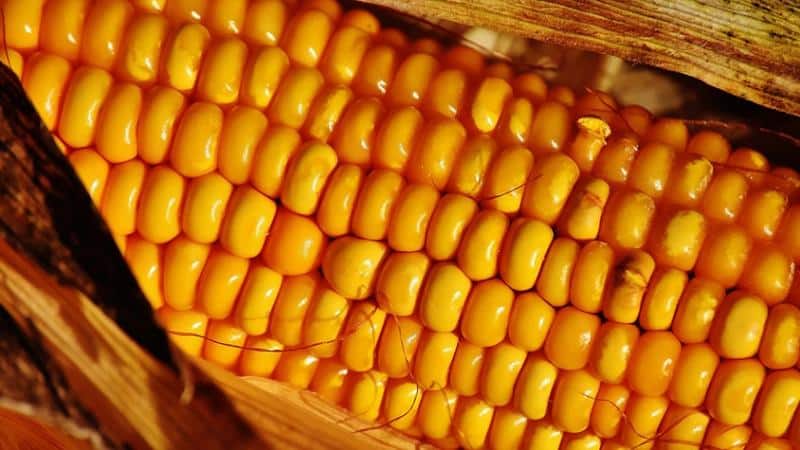
Maturation is determined by the following characteristics:
- uniform coloring of all grains;
- darkening of the pistillate filaments at the top of the cob;
- tight fit of grains to each other;
- drying out of the edges of the top wrappers.
When a ripe grain is compressed, its shell bursts and the milk-sugar liquid flows out.
The harvest is harvested within a few weeks, as the cobs are not formed at the same time. It is better to immediately boil or preserve the collected cobs.When corn is stored, its sugar content quickly decreases and the cobs dry out. Corn is harvested early in the morning. It is at this time that it contains the most sugar.
Important! The best option for storing corn is freezing. So it does not retain its juiciness, as well as its taste and beneficial properties.
Sweet corn, in addition to cooking, is used in other areas, for example, medicine and cosmetology. Corn starch can often be seen on the lists of allowed foods on some weight loss diets.
This nutritious grain plant is called variously: queen of the fields, second bread and golden grain cereal. The culture lives up to these names and truly deserves attention.
How to cook and eat
Bonduelle sweet corn is used as a side dish for various meat or vegetable dishes, as well as for salads, boiled or canned. The daily norm for a boiled product is no more than 2 cobs, and for a canned product – up to 200–300 g.
Rules for cooking sweet corn
Before cooking, the cobs are cleared of leaves and stigmas (hairs), then placed in water. Young corn is cooked for about 40 minutes, more mature - from 1 to 1.5 hours. When the cobs are cooked, place them on a dish and sprinkle with salt. If desired, use black pepper and other spices along with salt.
Corn is stored and consumed boiled for 1-1.5 months after reaching the technical maturity phase. Then the grains lose their juiciness and become hard, which negatively affects their taste.
Canning for the winter
Conservation – the most optimal way to preserve the taste and benefits of a product for a long time. The cobs are pickled whole, in the form of small pieces or grains.
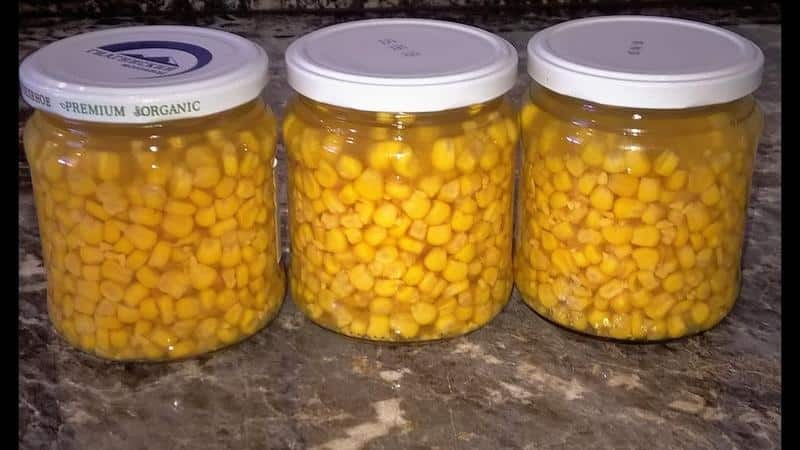
For preservation you will need the following ingredients:
- 4-6 cobs;
- 1 liter of water;
- 60 g sugar;
- 20 g salt.
Further work is carried out according to the following algorithm:
- Boil the water.
- Carefully clean the cobs of leaves and stigmas, then place in boiling water for 2 minutes.
- Add sugar and salt to the water and boil until the ingredients dissolve, stirring constantly.
- Separate the grains with a knife, place the whole cobs in jars or cut them if necessary.
- Pour in marinade.
- Cover the jars with lids.
- Place a cotton cloth at the bottom of the pan, place the jars there and fill the container with water at room temperature (+20...+25°C). The jars should be immersed in water up to the neck.
- Place the container with the contents on the fire.
- Sterilize for 2.5 hours, adding water if necessary.
- Roll up the jars, turn them over and wrap them in a warm blanket.
- When the preserve has cooled, place it in a cool, dark place for storage.
Corn in this form is stored for 1 to 3 years. Various spices and vegetables are added to the marinade to suit your taste. Celery, basil, saffron, bay leaf, chili pepper, garlic, etc. add interesting notes to canned corn.
Advantages and disadvantages of the variety: benefits and harm to the body
Scientists discovered the beneficial properties of corn relatively recently. Not only does it taste good, but it can also improve your health.
Benefits when using the product:
- relieves nervousness, eliminates depression, increases resistance to stress;
- strengthens the immune system, reducing the risk of colds and infectious diseases;
- improves and restores vision, normalizes the function of the visual apparatus;
- reduces the risk of developing benign and malignant tumors;
- restores the condition of mucous membranes;
- normalizes heart function, strengthens the walls of blood vessels, prevents thrombosis, atherosclerosis and other pathologies of the cardiovascular system;
- improves digestion, normalizes intestinal function;
- restores the body after physical and mental stress, exhaustion, intoxication;
- normalizes the functioning of the reproductive organs;
- improves sleep quality.
On a note. External use of corn flour eliminates acne problem.
Corn grains contain vitamins and minerals that improve metabolism and help restore the body. The cereal is consumed boiled, baked, canned, oil is squeezed out, ground into cereals, flour is prepared and grilled.
The less processed corn is on the cob, the healthier it is for the body. Steamed cereal retains more vitamins than, for example, boiled or baked cereal. This dish has much lower calorie content than cereal, porridge or cereal bread.
However, corn has a number of characteristics that are potentially harmful to health:
- high sugar content often causes bloating and is contraindicated for diabetics;
- high-calorie corn oil sometimes causes obesity;
- protein in cereal often provokes an allergic reaction;
- the grains contain calcium, which increases blood clotting, so you should limit consumption of the product if you have thrombosis or a tendency to thrombophlebitis;
- coarse fiber irritates the walls of the stomach, which is unacceptable in case of acute ulcers or various forms of gastritis;
- Excessive consumption of this cereal by a nursing mother can cause colic in the baby.
Important! If there are contraindications, you should limit your consumption of sweet corn or completely eliminate the product from your diet.
Farmer reviews
Sweet corn has long won the recognition of not only consumers, but also those who began to grow it on their plots. Most farmers talk about the unpretentiousness of the crop and good returns.
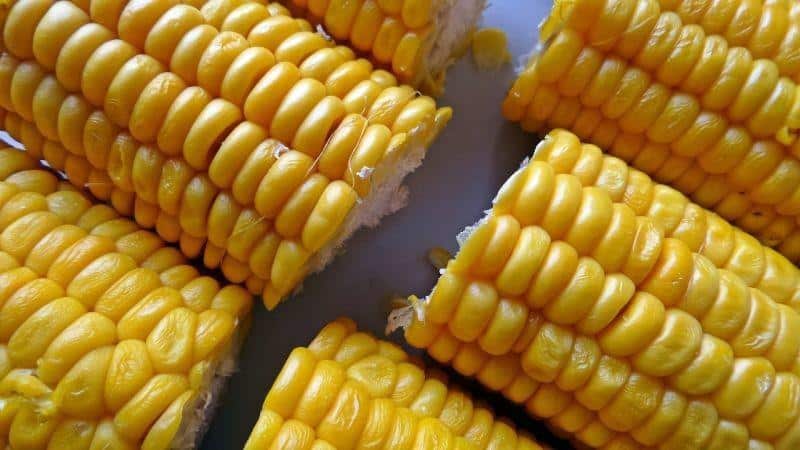
Victor, Krasnodar region: “I advise beginning corn growers to plant the sugar variety Bonduelle. It does not cause problems and pleases with productivity. Before planting, I always add azofoska, and a few days later - boric acid. When the bushes grow, I fertilize them with potassium humate and saltpeter. That year the harvest was good, I received 60 centners of grain per hectare of land.”
Sergey, Voronezh: “I have been growing sweet corn for several years in a row. First of all, it is not only very tasty, but also healthy for the body. This product can diversify your holiday table. With the help of this culture, I create special growth conditions for cucumbers, peas and beans. Planting beds with corn allows you to create a special microclimate, which contributes to the rapid development of climbing crops.”
Vera, Samara: “I’ve been growing sweet corn for about seven years, so I’ve had my own seeds for a long time now, and I distribute them to my neighbors by the handful. I plant it in the form of a hedge, near a chain-link mesh, thereby hiding the area from prying eyes. This year my sweet corn sprouted at jet speed, on the 5th day. There was so much harvest that it was enough to treat all relatives and friends, make supplies for three years ahead and feed the chickens all winter. I love this variety and will grow it in the future.”
Read also:
Does corn contain gluten? Is it in corn grits and flour?
Conclusion
Corn kernels are tasty and healthy. They are boiled, canned for salads and eaten fresh. Beautiful plants become a good decoration of the site and create a high hedge, as well as a barrier from excess ultraviolet radiation for some crops. Farmers successfully grow and receive abundant harvests not only in warm regions. The plant is unpretentious, and it is not difficult to create good conditions for it to grow in almost any region of our country.
How to grow big and sweet corn, watch the video: